Google Pixel 8a review: AI for the rest of us
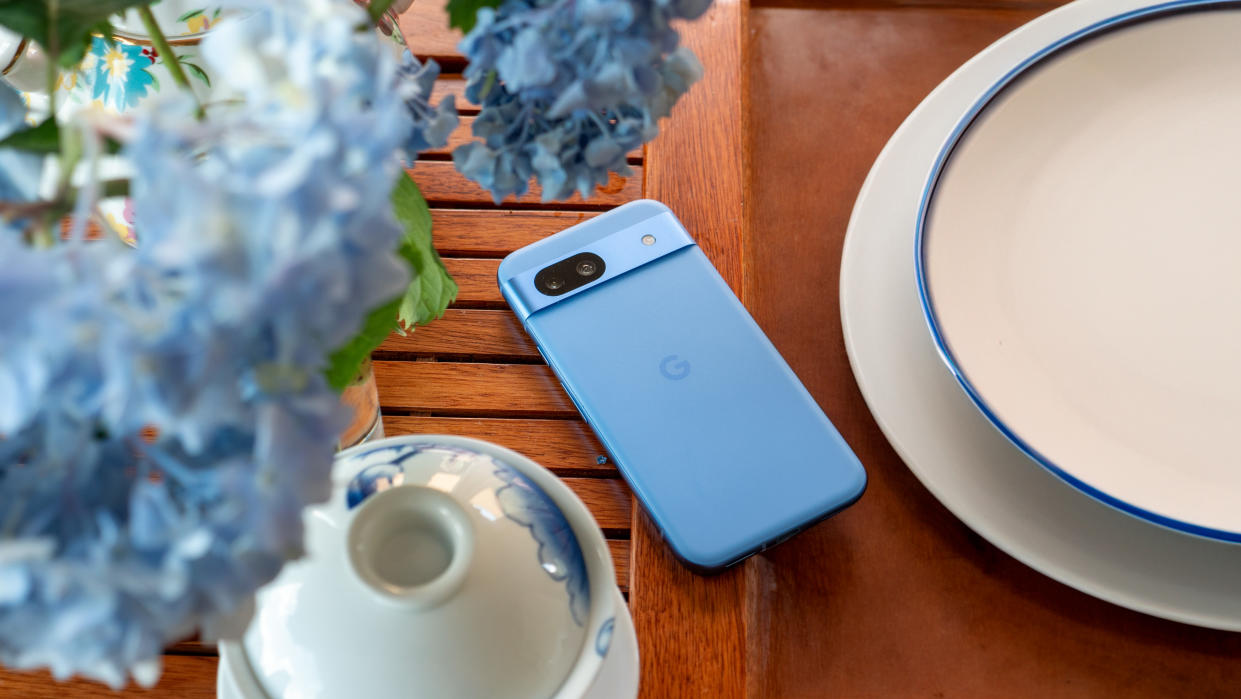
The Google Pixel 8a is the affordable flagship killer Google has always wanted to make. While Apple might have coined the term "AI for the rest of us" at 2024's WWDC conference, it's Google who is actually delivering all of its big AI features in a phone that's affordable for most people while Apple reserves it only for its most expensive phone.
Google isn't just stopping with the democratization of AI features, though. This phone sports some seriously impressive hardware improvements over last year's Google Pixel 7a, including more rounded corners and a matte texture on the back, which makes this the most comfortable phone for one-handed use. It's absolutely the most comfortable phone I've held in a long time!
Impressively, though, that sleek design houses the same processor, display, RAM, storage speed, and water-and-dust resistance rating as the more expensive Pixel 8. Plus, it's even got the powerful new Gemini Nano AI features thanks to the June Pixel Feature Drop. It certainly makes you wonder why you would ever need a more expensive Pixel phone, doesn't it?
I've been using the Pixel 8a on and off over the last month, taking hundreds of pictures with it and testing out all the latest updates. I've been using the Pixel 8a on T-Mobile's 5G network in North Carolina, United States.
Google Pixel 8a: Price and availability
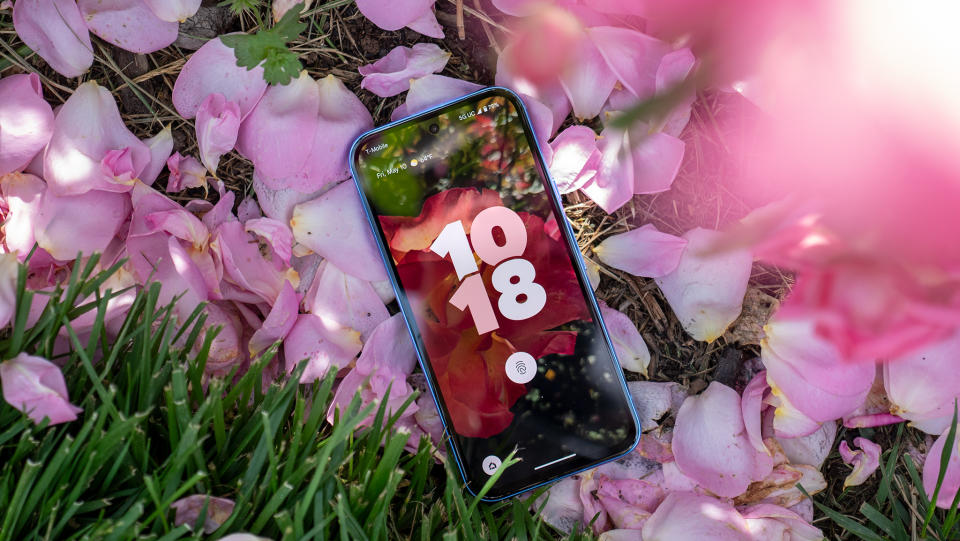
The Google Pixel 8a officially launched on May 14, 2024, with a starting retail price of $499 USD / $679 CAD / £499 / Rs 52,999 for the model with 128GB of internal storage. For the first time ever on a Pixel A-series phone, Google is also selling a 256GB storage model for an additional cost. The phone ships in your choice of Obsidian, Porcelain, Bay, and Aloe colorways, and it also comes in completely plastic-free packaging.
As you might expect, the best Google Pixel 8a deals will get you the phone at a reduced price — maybe even free — especially if you have an older phone to trade in.
These are all the countries where the Google Pixel 8a is sold:
U.S.
Canada
Austria
Belgium
Czech Republic
Denmark
France
Germany
Italy
Ireland
Netherlands
Norway
Poland
Portugal
Spain
Sweden
Switzerland
UK
Australia
India
Japan
Singapore
Taiwan
Google Pixel 8a: Display and design
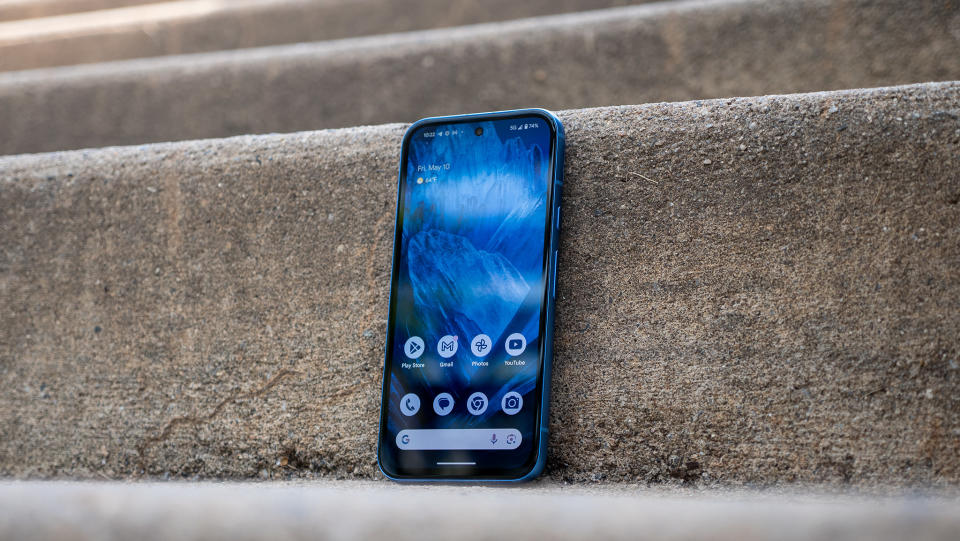
Of all the Pixel phone designs over the years, the Google Pixel 8a is my new favorite. It melds the unique camera bar design from the more expensive Pixel 8 series with further rounded corners, and a matte finish back that feels heavenly.
This is a phone that's built for human hands and it feels wonderful to use it one-handed, even if the display is a bit too big to reach all the edges with one thumb without shifting the phone around. Round corners do a lot for long-term usability and comfort. Sharp corners on phones like the Samsung Galaxy S24 Ultra are just plain uncomfortable, made even worse because it's a super heavy phone.
The Pixel 8a isn't shockingly light by any measure but it does come in at around 5 grams lighter than last year's Pixel 7a. At 188g, you'll feel it in your pocket but it's not heavy enough to cause finger fatigue if you find yourself holding it for a long time. As actor Chris Evans once pointed out, heavy phones often cause pinky finger fatigue.
Beyond the weight and shape, Google is using surprisingly premium materials for most of the phone. The back is still plastic, but it doesn't feel like any plastic phone I've ever used, thanks to a beautiful, fingerprint-resistant matte finish. I praised Google's use of a matte finish in my Pixel 8 Pro review, and this phone feels nearly identical to that.
If you tap the back, there's a slightly hollow feeling compared to a glass-backed phone like the more expensive Pixel 8 models, but it doesn't feel cheap.
Likewise, the "satin aluminum" frame looks extremely premium, particularly on the Bay blue model I have for review. This frame also has a matte finish that won't attract fingerprints, leaving your Pixel 8a looking clean and shiny even after using it for hours.
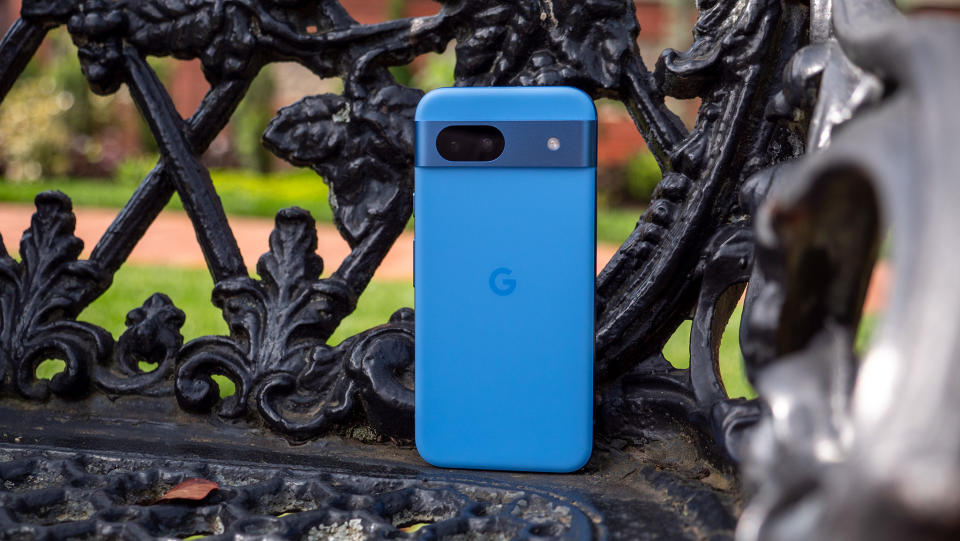
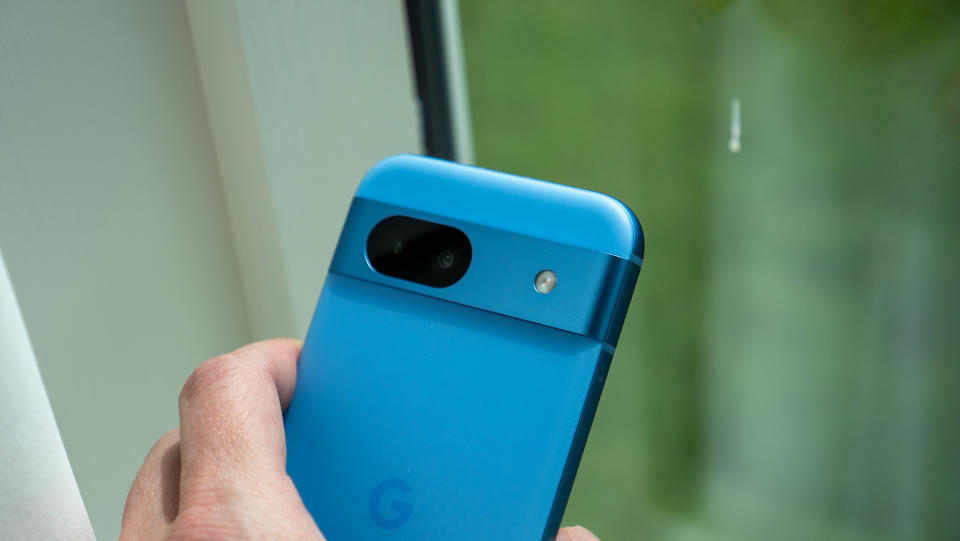
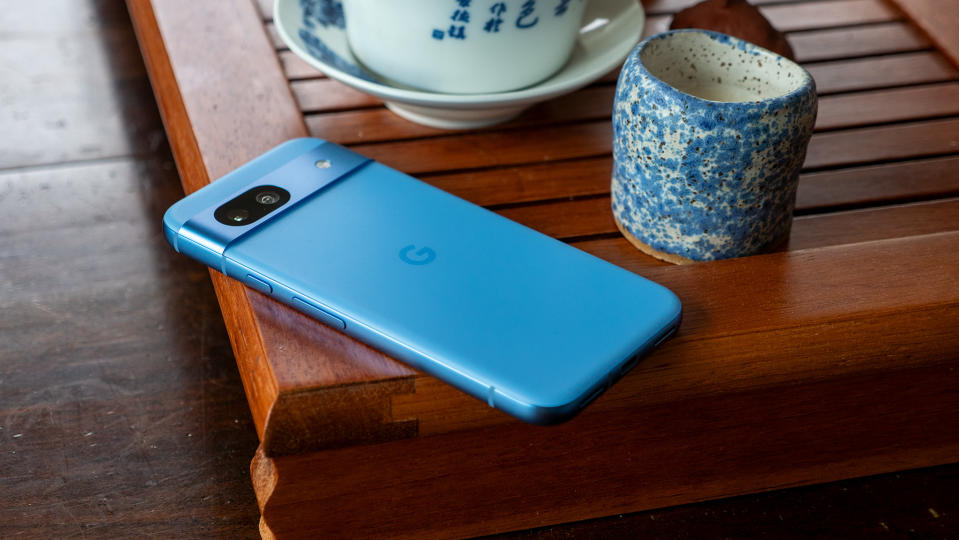
The display has been upgraded yet again this year, and while it looks good on paper, it has some hidden issues. Let's start with the positives, though.
The display is spec-for-spec identical to the Pixel 8 in all but one way: it's not LTPO. That means this 120Hz panel shifts between 60Hz and 120Hz depending on what's happening on screen, while the Pixel 8 and Pixel 8 Pro's displays can smoothly shift between 1Hz and 120Hz. In plain language, the Pixel 8a's display is slightly less battery-efficient.
But the rest of the panel is right on the money in most measurements. Google calls it the "Actua display" in reference to its color accuracy, which helps highlight the quality of the photos taken with the phone's camera when viewing them on the phone. It also gets incredibly bright, with a peak brightness of 2000 nits and a peak HDR brightness of 1400 nits.
This PWM flicker rate is the lowest of any major smartphone series and is truly awful for any flicker-sensitive person.
The downside is that PWM-sensitive folks are going to find this display incredibly uncomfortable. Like the mainline Pixel series, this uses 240Hz PWM flickering at all brightness levels, quickly turning the display on and off to fool your eyes into thinking it's bright or dim instead of adjusting voltage like traditional displays and lights.
This PWM rate is the lowest of any major phone series and is truly awful for any flicker-sensitive person. Google doesn't offer an anti-flicker or flicker-reduction mode like the OnePlus 12R or any OLED-donning Motorola phone, which makes those phones much better options if you're PWM-sensitive.
Google Pixel 8a: Performance and battery life
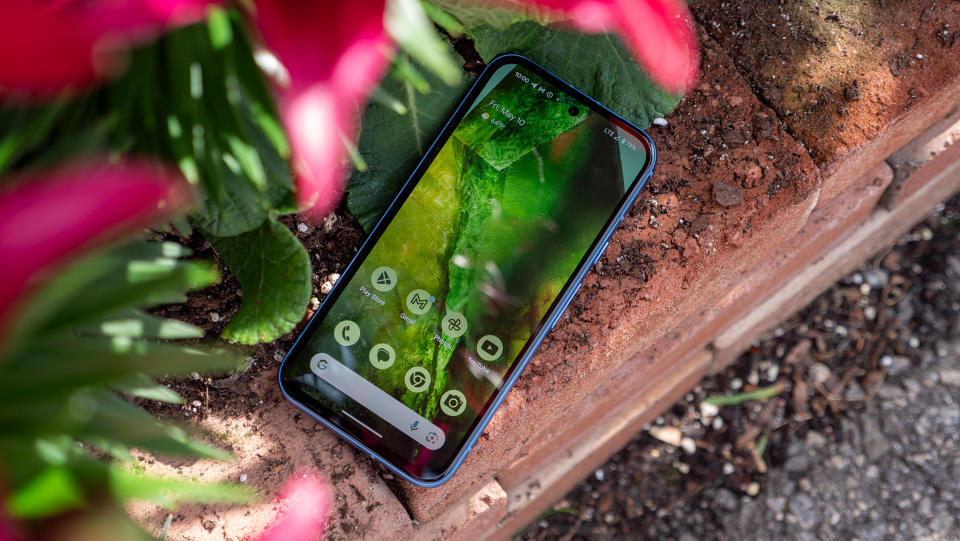
The Google Pixel 8a sports the exact same Google Tensor G3 processor as the more expensive Pixel 8 and Pixel 8 Pro phones. That means Google was able to pack in the same AI features as those more expensive phones.
A huge part of that capability is in the Tensor G3's upgraded NPU capabilities, which, according to benchmarks we ran, are nearly three times faster than the NPU in the Pixel 7a. That NPU, or Neural Processing Unit, is responsible for efficiently running AI routines on-device, ensuring that the phone quickly processes AI-based tasks, and keeping them from needing to be uploaded to a cloud server for privacy reasons.
Benchmark performance is better than the Pixel 8 and 8 Pro, but multitasking was worse for some Android Central staff.
Based on benchmarks, the phone's overall performance is also better than that of the Pixel 7a and even the more expensive Pixel 8 Pro. Google said it was able to concoct a new thermal management method, and while the phone still throttles heavily at around 40 degrees Celsius, it takes longer to hit that thermal limit.
However, while I found the performance to be generally good, some Android Central staff have found that multitasking isn't as snappy or reliable as the Pixel 8 or 8 Pro. Android and Chill author Jerry Hildenbrand noted that his apps would regularly reload when switching between them, something he didn't have a problem with on his older Pixel 6 Pro.
Everyone uses different types of apps, so your mileage may vary on this front. Some apps naturally consume more RAM or more processing power, which is also why battery life and phone overheating can vary wildly from person to person.
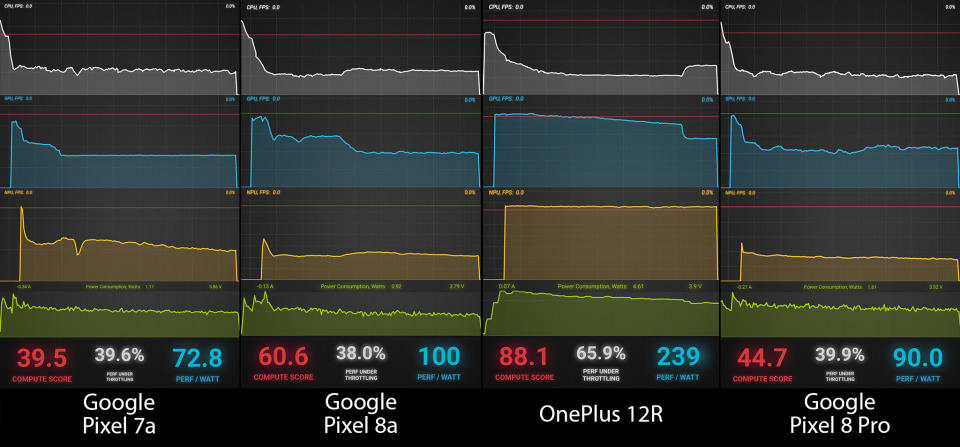
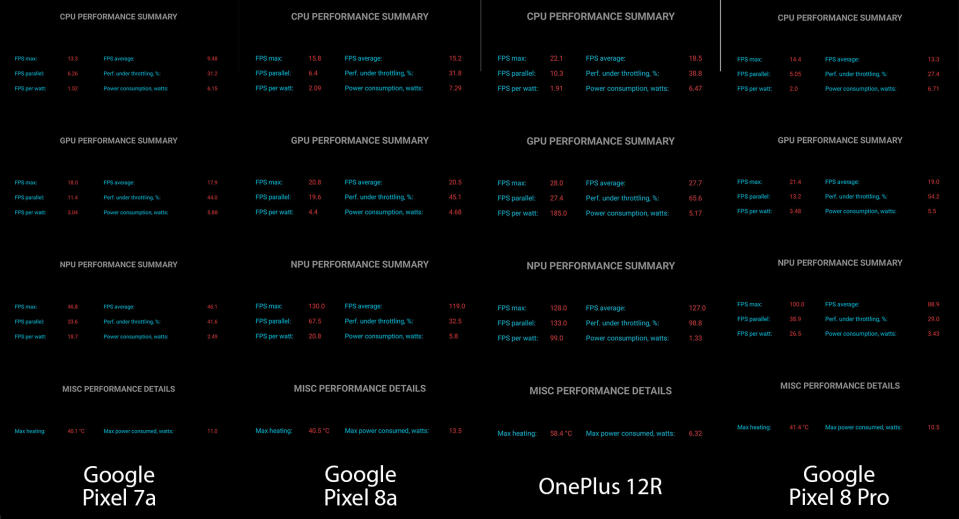
However, when compared to the OnePlus 12R, our current favorite mid-range phone, the Pixel 8a's performance is quite lacking. Not only that, but the Pixel 8a's performance-per-watt is substantially worse than the OnePlus 12R. In plain terms, your battery life is going to drain more quickly on a Pixel 8a than a OnePlus 12R when doing anything that taxes the processor.
Battery life is better than the Pixel 7a but still disappointing, and charging time is still painfully slow.
Our parent company runs lab tests via the Future Labs department, and those test results show that the Pixel 8a gets one hour of better battery life than the Pixel 8 Pro in the battery rundown test at the default 60Hz refresh rate. In other words, if you're using default settings—60Hz display, auto brightness—then battery life will be quite excellent.
But running at 60Hz in 2024 is a crutch that I don't think should be relied upon. Predictably, the Pixel 8a's battery life is worse than the Pixel 8 and 8 Pro when using the "smooth display" option, which means it runs at 120Hz any time the phone feels the higher frame rate will result in a smoother experience.
Since the display isn't LTPO, it can only switch between 120Hz and 60Hz. More annoying than this is the Pixel 8a's slow charging speed. In a 30-minute charging test, the Pixel 8a went from 0% to a paltry 33%. Meanwhile, the Pixel 8 was able to hit 60% in the same amount of time with the same 30W charger.
Google Pixel 8a: Software
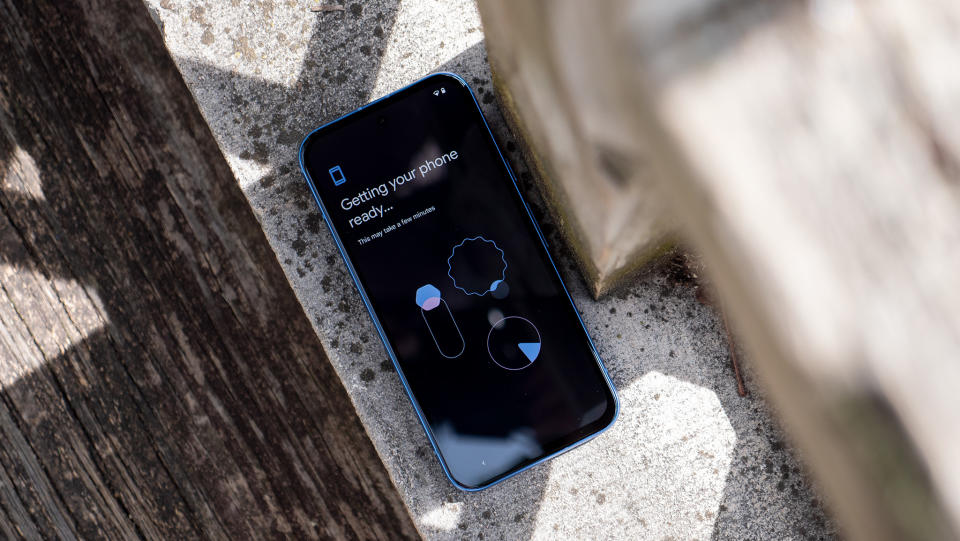
Google's Pixel software has really come into its own over the years, particularly in the past six months, as Google has added Gemini features to the platform. The Pixel 8a sports all the same AI features as the regular Pixel 8, including Magic Eraser, Zoom Enhance, Best Take, Audio Magic Eraser, Circle to Search, and more.
The Pixel 8a is also set to receive seven years of Android updates, meaning it'll see Android 21 before the end of its shelf life. It also has a free VPN built-in, something only Pixel phones provide.
Google provides seven years of software updates for the Pixel 8a, an unprecedented number in this price category.
That's a huge value add for a phone in the $500 price range, as these devices normally don't have the processing capabilities to implement impressive AI features like this. It's a huge win for anyone who doesn't want to spend flagship money but still wants flagship features.
Of course, this means there's almost nothing new on the Pixel 8a when compared to the Pixel 8 series. The lone exceptions are the upgraded Guided Frame utility and the improved Family Link parental controls setup, but those have already made their way over to the rest of the Pixel 8 series.
When it made its debut on the Pixel 7, Guided Frame was just used as a way to help vision-impaired users take better photos and selfies. Now, Guided Frame can utilize both front and rear-facing cameras to describe what your phone's camera is seeing.
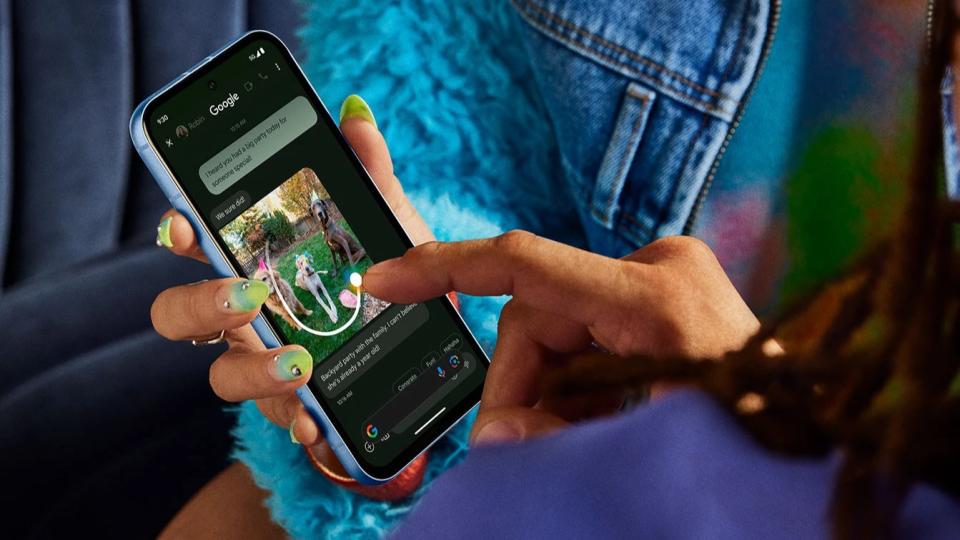
Google also improved Family Link by making the setup process easier and clearer, which goes nicely with the recent Pixel Watch update that adds School Time and other important parental control functions. Not only that, but the new Fitbit Ace would pair extremely well with a Pixel 8a for kids, giving parents lots of control all while giving kids devices they actually want—not scaled-down phones or watches with missing features.
Under the shiny exterior of AI features and update promises lingers an underlying distrust built up from years of screw-ups on Google's part.
But under the shiny exterior of AI features and update promises lingers an underlying distrust built up from years of screw-ups on Google's part. The Pixel series has become known for its buggy updates and weird problems, which begs the question: Should you buy a Pixel 8a?

Things have slightly improved since the Pixel 6 days, but over the past year alone, we've seen monthly updates cause battery drain issues, cellular connectivity issues, overheating issues, and even a crucial storage bug that made it impossible to use many apps.
These are just a handful of issues Pixel owners have had to deal with to some degree over the past few years, and it makes me wonder if monthly updates are really worth the issues they seem to create.
Apple may have coined the phrase "AI for the rest of us," but it's Google that is actually bringing the best AI features to every user at every price point.
Of course, the flip side to all this is that Pixel phones nearly always get updates before any other phone on the market. There's certainly a value in that, and Google always updates its phones with cool new features throughout the year instead of just waiting for a new hardware release as Apple does.
Not only that, but Google is bringing all the hot new AI features from Gemini Nano to this $500 phone. Meanwhile, Apple Intelligence and Gemini Nano are only coming to the newest and most expensive iPhones, meaning Apple is gatekeeping the most interesting new features in a decade for folks with the most money.
Apple may have coined the phrase "AI for the rest of us," but it's Google that is actually bringing the best AI features to every user at every price point.
Google Pixel 8a: Cameras
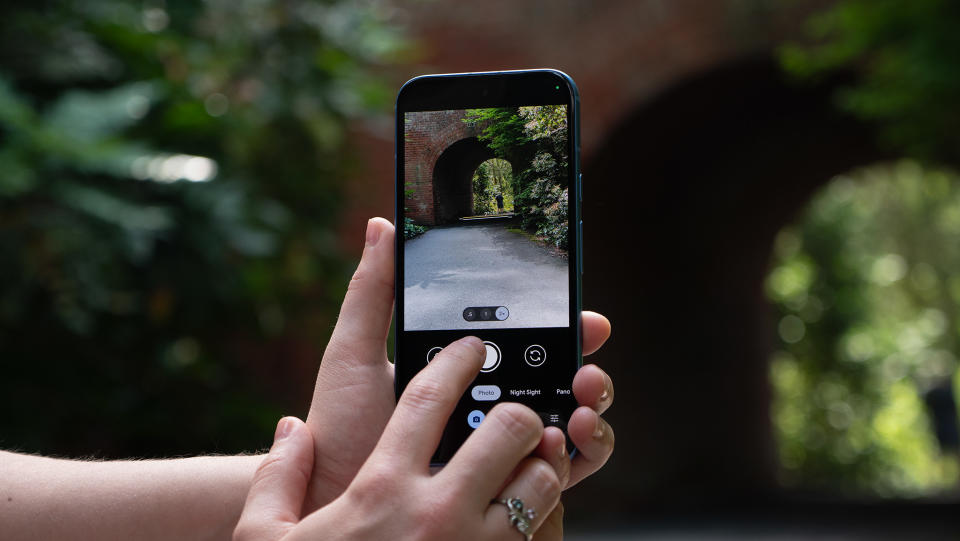
Whenever I review a Pixel phone and compare it to other phones, my thoughts usually begin with, "I wonder how much worse this other phone's camera is compared to the Pixel."
Google Pixel phones have long been the pinnacle of mobile photography, and while some other phones sometimes beat it, Pixel's consistently excellent camera performance delivers a reliability factor that can be envied.
However, despite massive improvements in the Tensor G3's AI-processing capabilities, the Pixel 7a and 8a's cameras both produce identical results. In other words, if you just want a great budget phone with an equally great camera, I recommend buying the Pixel 7a at half the price of a Pixel 8a, instead.
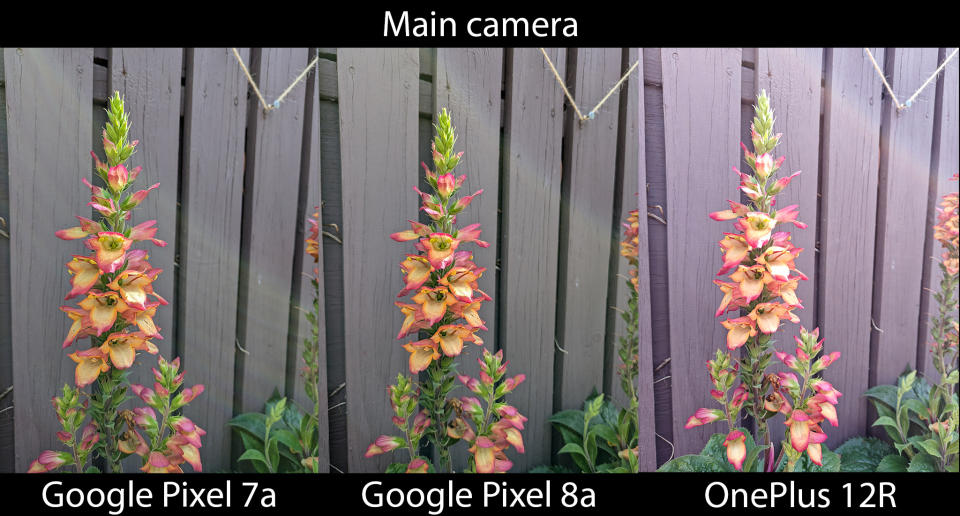
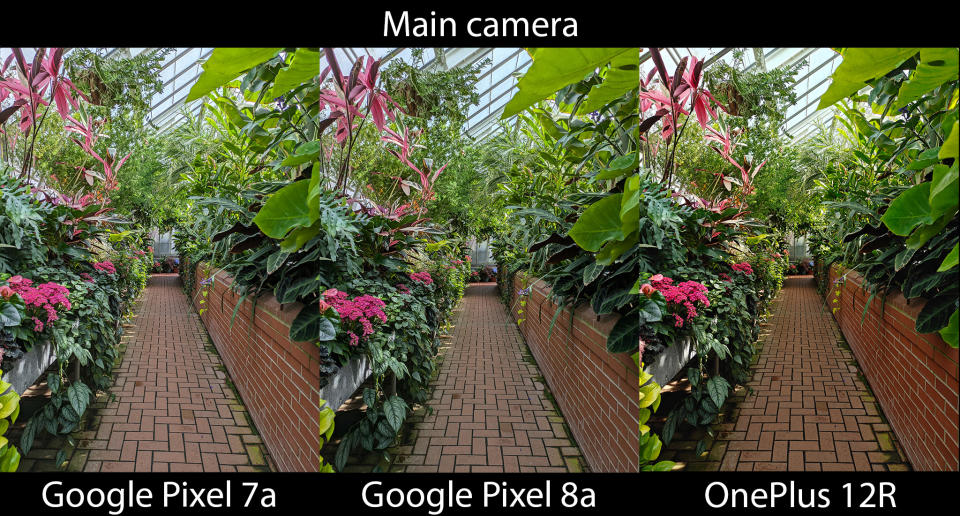
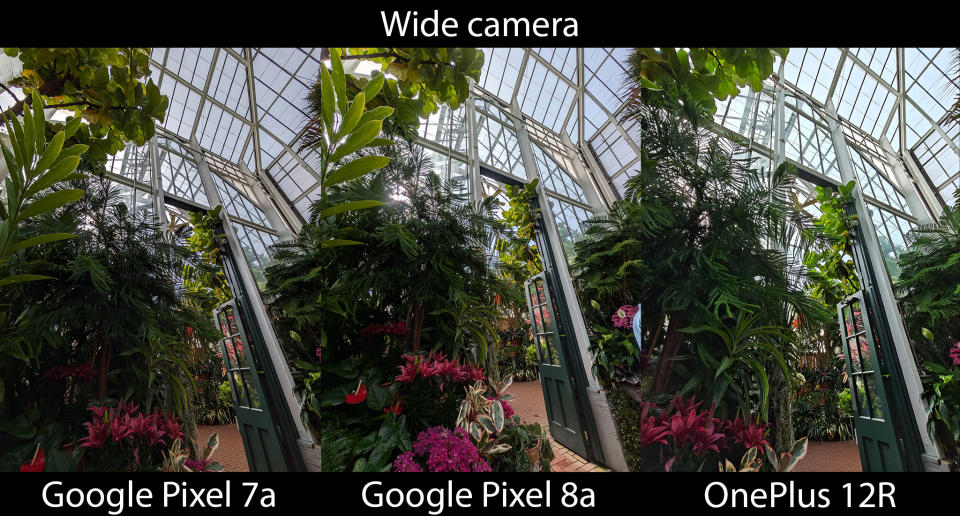
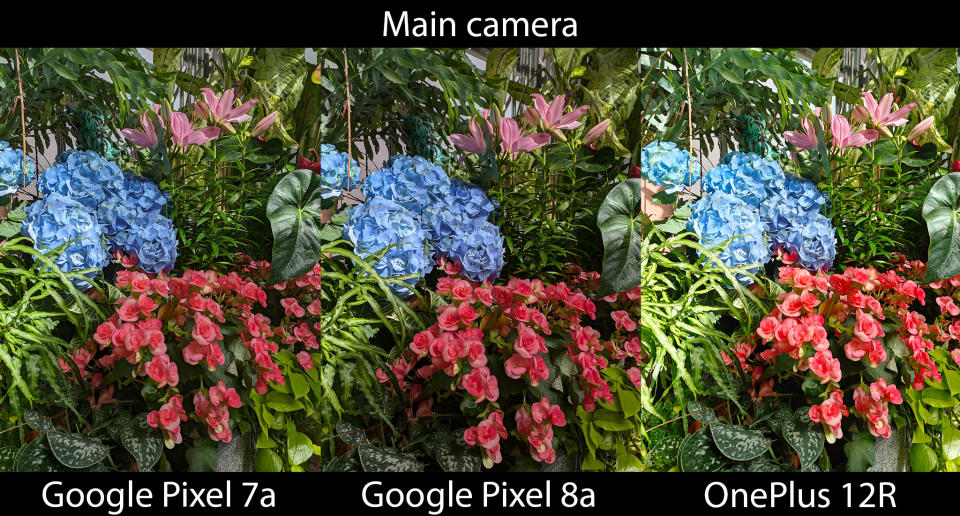
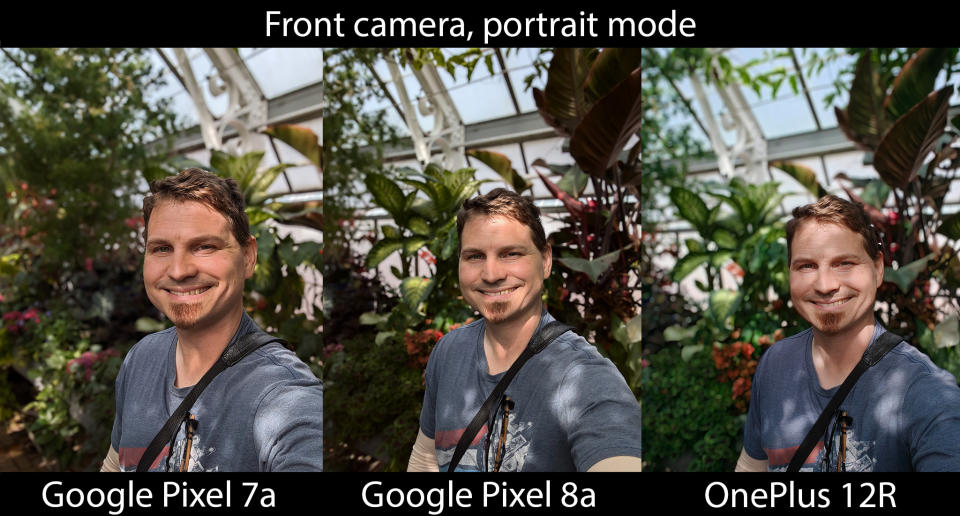
Comparing the Pixel 8a to the OnePlus 12R—another excellent $499 phone—shows that there's not a huge gap between the two in most shots, but the Pixel 8a definitely wins more often than not. In many cases, the Pixel often gets the exposure mostly correct and ends up pulling out more detail, resulting in a better-looking picture because of it.
Photos taken on the Pixel 8a exhibit the classic high contrast, color-accurate imagery that Google's Pixel phones are known for, and that's a very good thing.
I've long recommended the Pixel series as the best phone for parents because of its ability to capture crisp pictures of kids or pets who won't sit still for a picture. Unfortunately, the Pixel 8a doesn't do as good a job capturing objects in motion as the rest of the Pixel 8 series.
To prove the point, I compared the Honor 200 Pro, Pixel 8a, and Pixel 8 Pro in a camera head-to-head review and the results were very surprising, challenging what I assumed about Pixel cameras from the get-go.






I also found that the front-facing camera could use some work in the color science department. Shots were regularly too cool and often made my skin look sickly pale because of it.
Plus, Google's portrait mode shots still have those messy edges around people where the phone "cuts out" the person so it can blur the background in an attempt to make the photo look like it came from an expensive camera.






However, while these negative points were certainly irritations, they may only bother a subset of users. Google can always fix these in an update and has been known to do such things in the past.
The rest of the camera experience is truly excellent, including the updated camera UI that launched with the Pixel 8 last Fall. The camera software launches lightning quick and is ready to take a photo or video within just a second or two of double-tapping that power button.
I've also found that few companies capture HDR photography like Google Pixel phones do, thanks to Google's Ultra HDR tech.
While this can brighten up dark spots to a fault sometimes, as I'd say happened in the ultrawide shot above, you'll notice that while the Pixel 8a brightened up the shadows a bit too much, it also toned down the ultra-bright lights enough so that they're actually readable. This extreme brightness range makes Pixel photos look incredible and often better than other phones because of it.
Google Pixel 8a: The competition
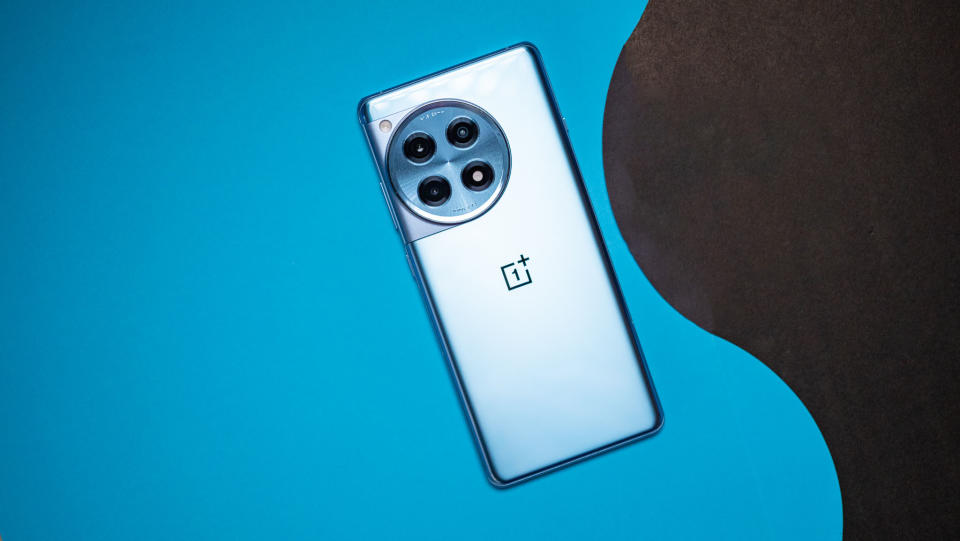
For the price, it's hard to turn down the Pixel 7a. The best Pixel 7a deals will get you the phone for $350. Considering that the Pixel 7a is still due for four more Android updates (up to Android 19), this one has quite a bit of life left in it. You'll also be getting a camera with identical quality capture as the Pixel 8a, although battery life and performance are worse than Google's latest can provide.
But if battery life and performance are your chief concern, the OnePlus 12R is the best buy at $500. It has a Snapdragon 8 Gen 2 processor, which is roughly twice as fast as the Tensor G3 in the Pixel 8a for gaming and other graphics-intensive applications. It also charges from 0-100% battery in less than 30 minutes, while the Pixel 8a will take over an hour and a half for the same task. However, OnePlus doesn't offer the same level of long-term support or some of the Pixel-exclusive AI features, and the camera is not as good as a Pixel.
Google Pixel 8a: Should you buy it?
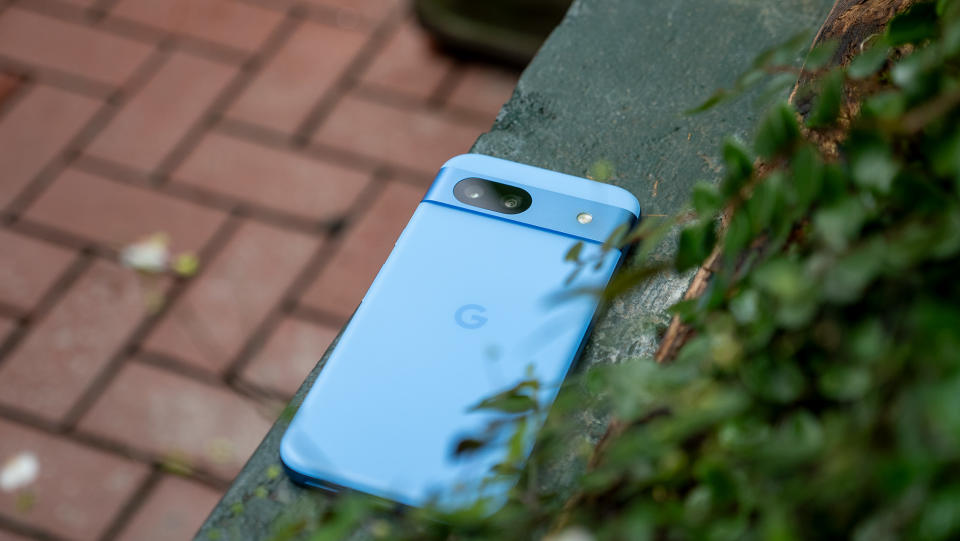
You should buy this if...
You plan to hold on to your phone for years.
You want the best camera in its class.
You love Google AI features and Pixel features.
You shouldn't buy this if...
You're sensitive to flickering lights or PWM-dimmed displays.
You need the best performance for the price.
You need fast charging and/or more than 24-hour battery life.
As the price of the Pixel A-series continues to climb in many regions, its value continues to encroach on full flagship-tier phones. There's also something to be said when the best Pixel 8 deals can get you a better phone—that's the regular Pixel 8—for the same price as the 8a. Not only that, but the OnePlus 12R also retails for $499 and packs a significantly faster and more efficient processor onboard. Plus, OnePlus uses a better display that's also more eye-friendly.
Of course, there's no guarantee that you can snag a Pixel 8 for $499, making the Pixel 8a the best buy at the price if long-term updates and camera quality are your top features. Google's update quality has been a little shaky over the past few years, though, which hangs a cloud over an otherwise impeccable record of update speed.
For now, I'd personally pick a Pixel 7a over Google's latest because of the great Pixel 7a deals currently available. Sure, it's only got four more years of Android updates, but I'm not convinced that current Tensor processors will be fast enough to feel snappy for longer than that. At $350, the 7a is an unbeatable deal with camera quality that matches the 8a, even if it doesn't have as many AI features.

Google Pixel 8a
Google built a lovely little phone in the Pixel 8a, packing in the same Tensor G3 processor as its more expensive Pixel 8 phones alongside seven years of support, so you don't have to worry about FOMO for nearly a decade.
